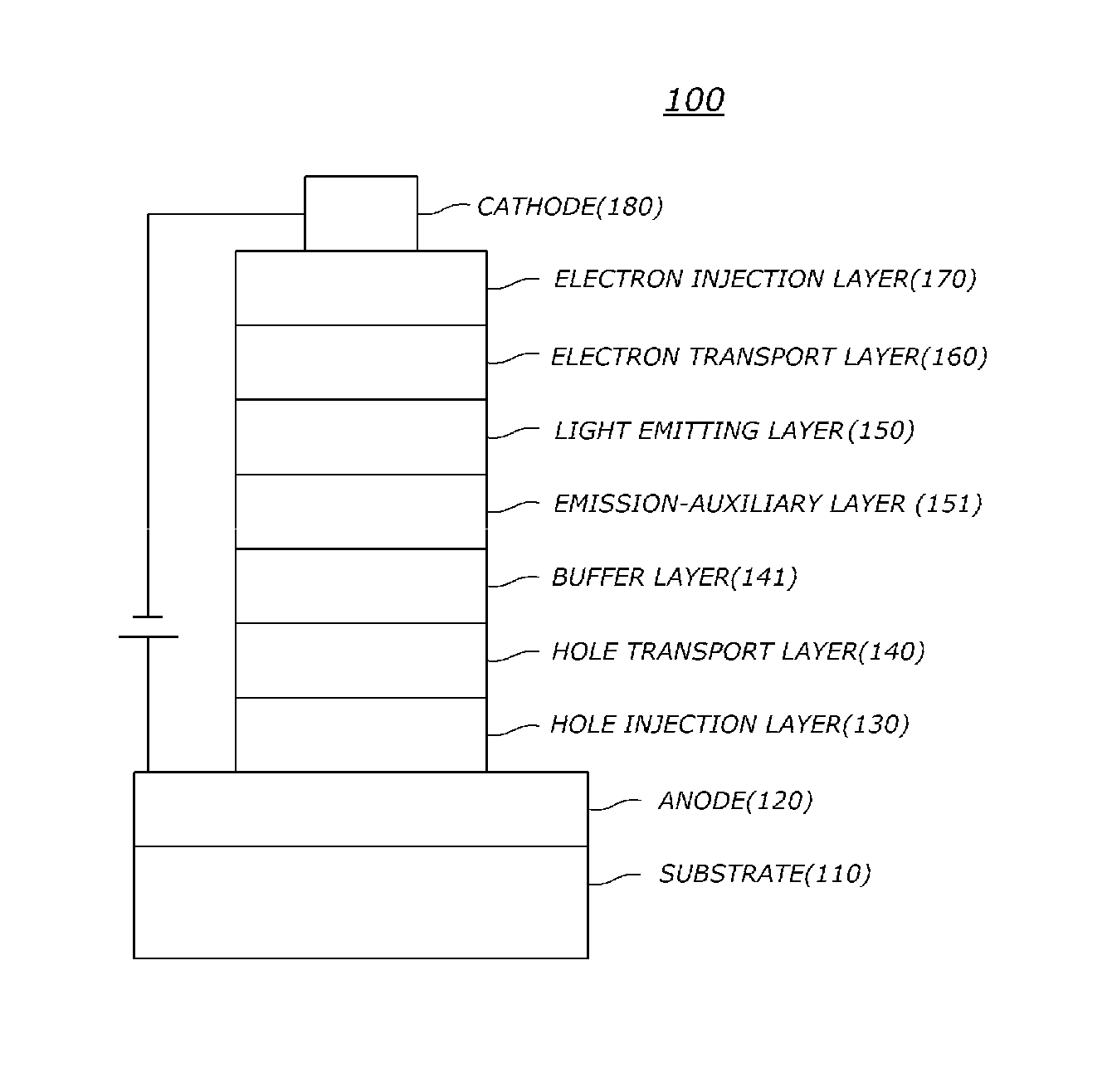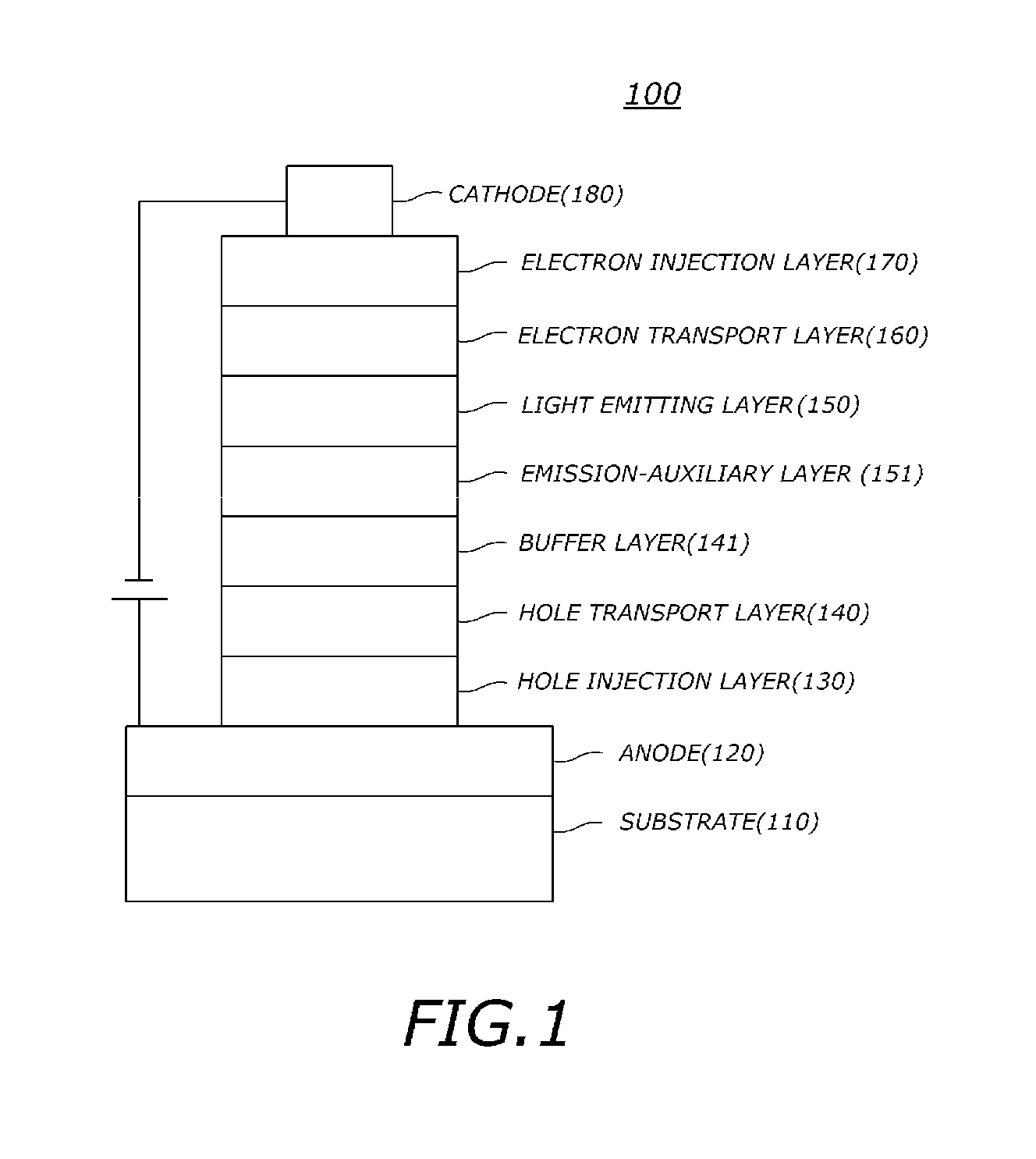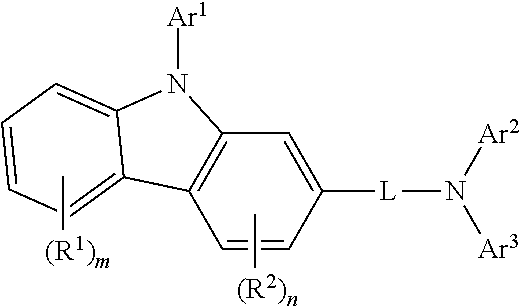Compound for organic electronic element, organic electronic element using the same, and an electronic device thereof
a technology of electronic elements and organic electric elements, applied in the direction of luminescent compositions, organic chemistry, chemistry apparatus and processes, etc., can solve the problems of power consumption, efficiency and life span issues, and the need for power consumption to increase, so as to achieve high luminescence efficiency, wide band gap, and high t1 energy value
- Summary
- Abstract
- Description
- Claims
- Application Information
AI Technical Summary
Benefits of technology
Problems solved by technology
Method used
Image
Examples
synthesis example
[0099]The final product of the present invention can be synthesized by reaction of Sub 1 and Sub 2 as illustrated in the following Reaction Scheme 1, but the present invention is not limited to the following examples.
I. Synthesis Example of Sub 1
[0100]Sub 1 of the Reaction Scheme 1 can be synthesized according to, but not limited to, the following Reaction Scheme 2.
[0101]1. Synthesis Example of Sub 1-1
[0102](1) Synthesis of Sub 1-I-1
[0103]Phenylboronic acid (76.84 g, 630.2 mmol) was dissolved in THF (2780 ml) in a round bottom flask. Then, 4-bromo-1-iodo-2-nitrobenzene (309.96 g, 945.3 mmol), Pd(PPh3)4 (36.41 g, 31.5 mmol), K2CO3 (261.3 g, 1890.6 mmol) and water (1390 ml) were added into the round bottom flask, and the mixture was stirred at 80° C. After the completion of the reaction, the reaction product was extracted with CH2Cl2 and water. The extracted organic layer was dried over MgSO4 and concentrated. The concentrated resultant was separated by silica gel column chromatograph...
example 1
Green OLEDs (A Hole Transport Layer)
[0256]Organic light emitting diodes (OLEDs) were fabricated according to a conventional method by using a compound of the present invention as a hole transport layer material.
[0257]First, an ITO layer (anode) was formed on a glass substrate, and a film of 4,4′,4″-Tris[2-naphthyl(phenyl)amino]triphenylamine (“2-TNATA”) was vacuum-deposited on the ITO layer to form a hole injection layer with a thickness of 60 nm. Subsequently, P1-1 of the present invention was vacuum-deposited with a thickness of 60 nm on the hole injection layer to form a hole transport layer.
[0258]Subsequently, a light emitting layer with a thickness of 30 nm was deposited on the hole transport layer by doping the hole transport layer with 4,4′-N,N′-dicarbazole-biphenyl (“CBP”) as a host material and tris(2-phenylpyridine)-iridium (“Ir(ppy)3)”) as a dopant material in a weight ratio of 90:10.
[0259]Next, a film of ((1,1′-bisphenyl)-4-olato)bis(2-methyl-8-quinolinolato)aluminum (“B...
example 2 to example 256
Green OLEDs (A Hole Transport Layer)
[0261]The OLEDs were manufactured in the same manner as described in Example 1, except that any one of the compounds P1-2 to P1-112, P2-1 to P2-112, P3-1 to P3-6, P3-19 to P3-24, P3-37 and P3-38 of the present invention in the Table 4 below was used as the hole transport layer material, instead of the inventive compound P1-1.
PUM
| Property | Measurement | Unit |
|---|---|---|
| thickness | aaaaa | aaaaa |
| thickness | aaaaa | aaaaa |
| thickness | aaaaa | aaaaa |
Abstract
Description
Claims
Application Information
 Login to View More
Login to View More - R&D
- Intellectual Property
- Life Sciences
- Materials
- Tech Scout
- Unparalleled Data Quality
- Higher Quality Content
- 60% Fewer Hallucinations
Browse by: Latest US Patents, China's latest patents, Technical Efficacy Thesaurus, Application Domain, Technology Topic, Popular Technical Reports.
© 2025 PatSnap. All rights reserved.Legal|Privacy policy|Modern Slavery Act Transparency Statement|Sitemap|About US| Contact US: help@patsnap.com



